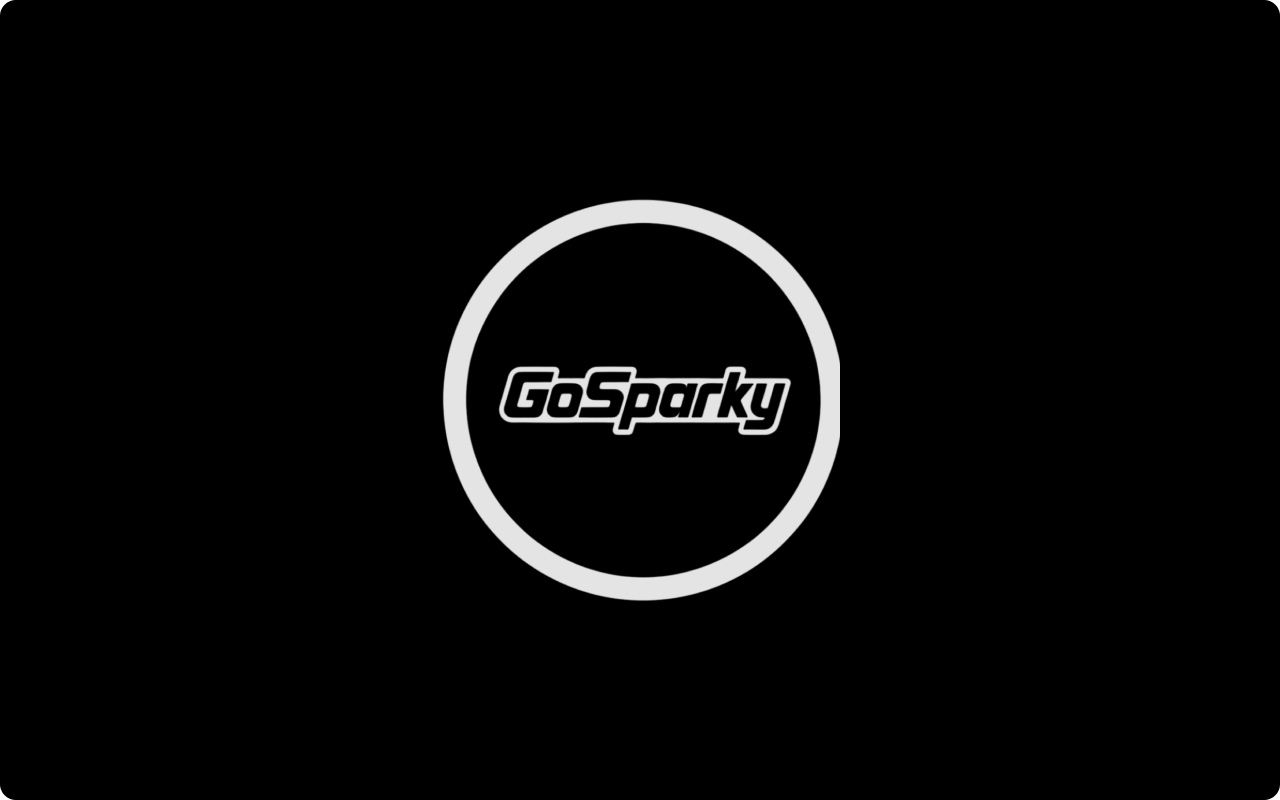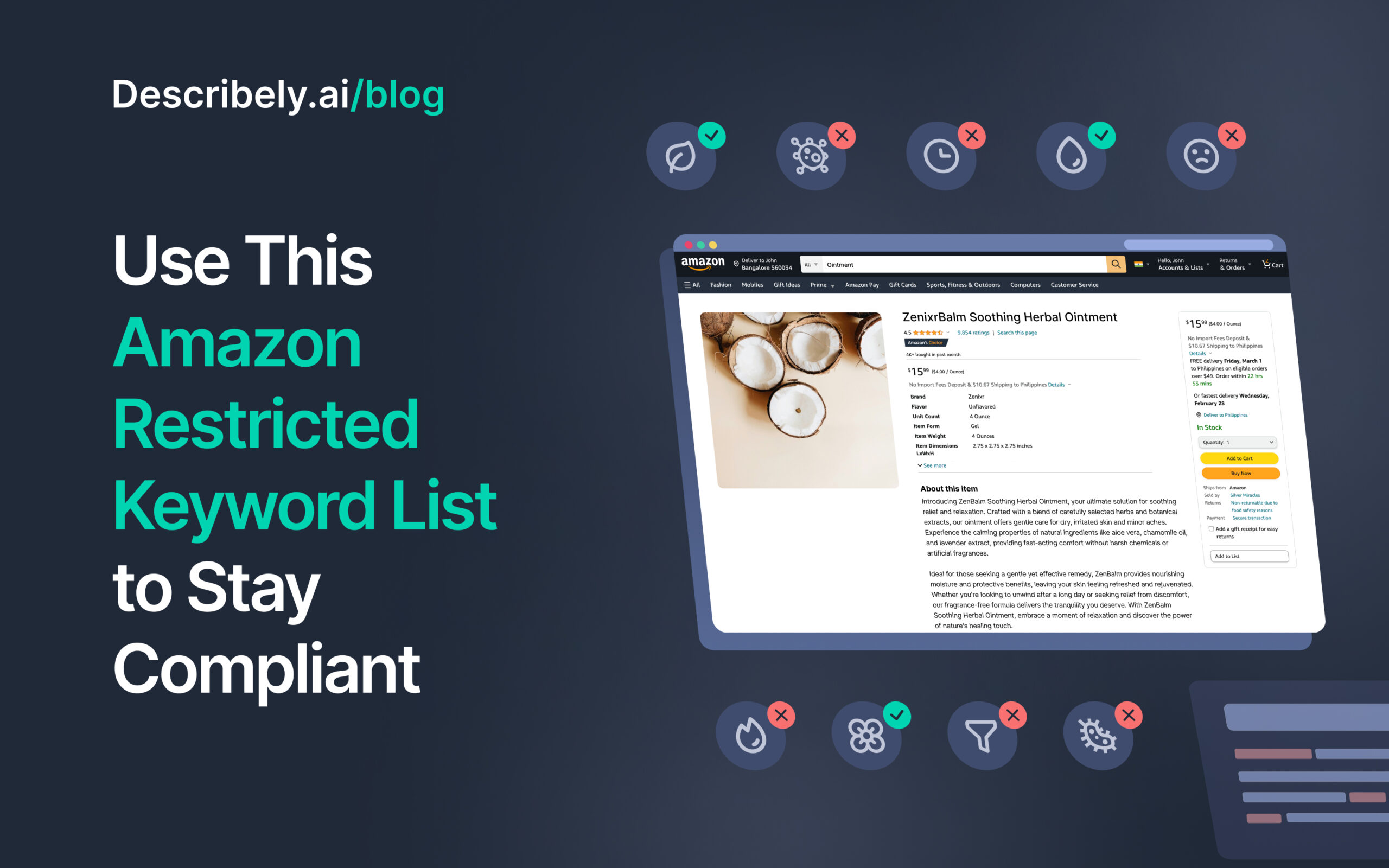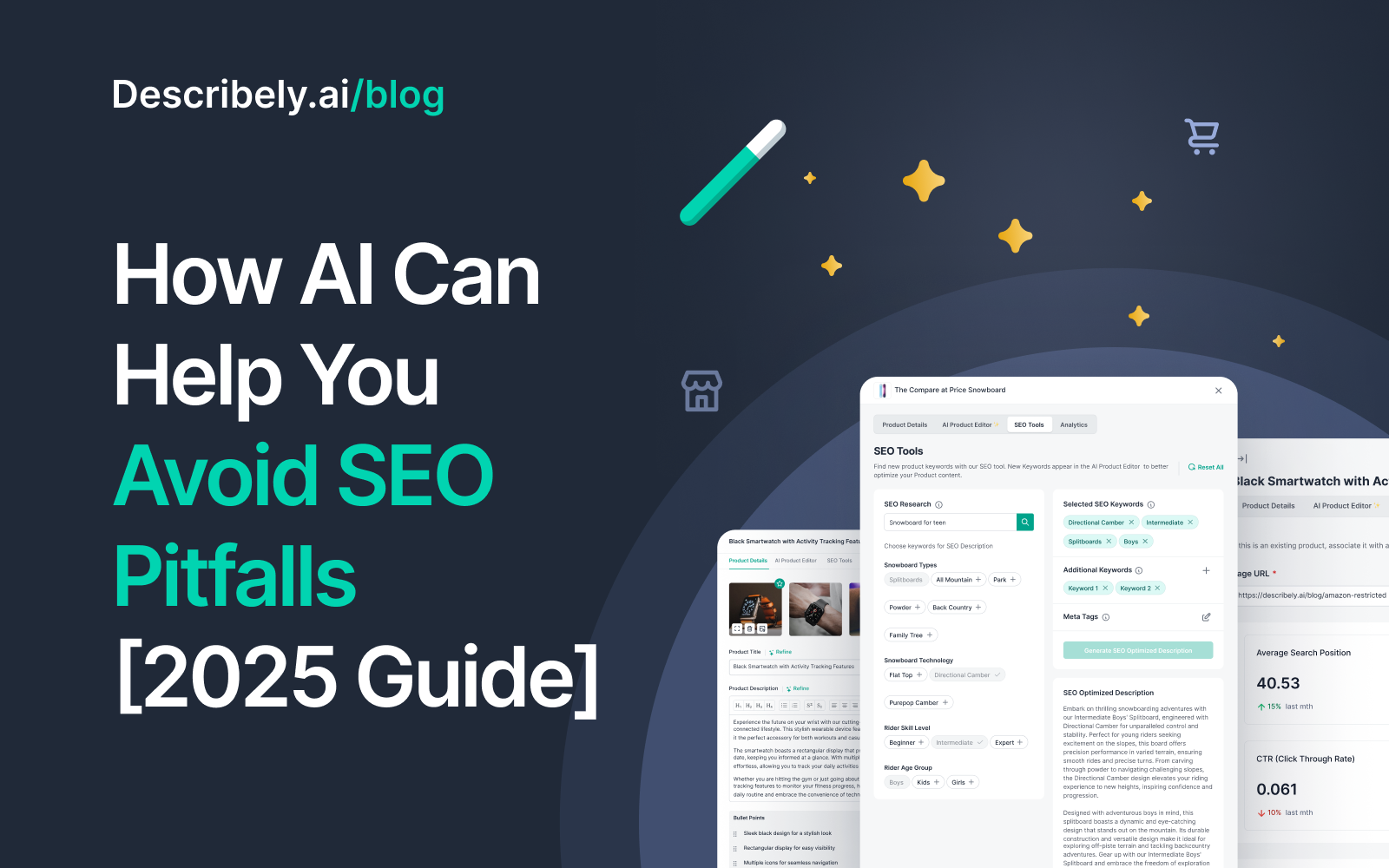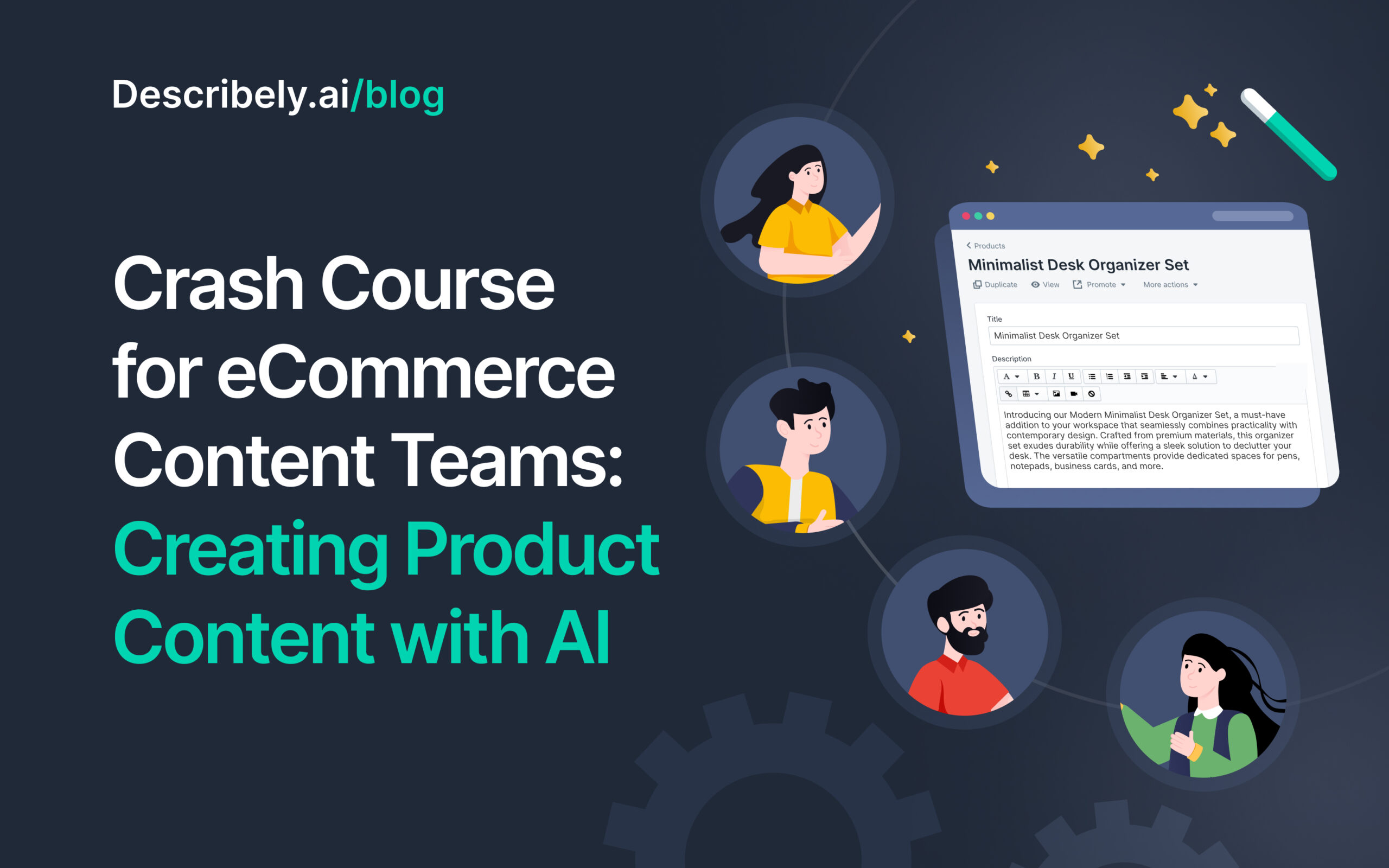
A Crash Course for eCommerce Teams: Creating Product Content With AI
If you have countless products and deadlines to manage, you might have wondered if AI can help your team save time.
Maybe you’ve tried ChatGPT to automate content creation, only to spend more time revising. You think AI can save your team so much time, but you haven’t found a reliable way to use it yet.
Well, this post gives you a quick rundown on everything that goes into AI for eCommerce:
- At what point is it cost-efficient to switch to AI tools?
- What are the must-have AI use cases for effortless product content creation at scale?
- What are your best options and when to use each?
- How to validate whether or not an AI platform will actually save you time?
Important note: The article will give you a bird’s-eye view of what to look for in AI for eCommerce. If you want the most in-depth analysis with examples, we created The Buyer Guide for Ecom Leaders Looking To Scale Content With AI (download here).
Now let’s dive into some of the key points that the buying guide covers.
Cost Overview: How AI Stacks Up
The average AI pricing ranges from $10 to $100 per month, which is similar to the cost of one outsourced product description. With the right tool, it’s equivalent to hundreds of listings that barely need adjustments.
These tools often include copy variations, SEO features, and image generation. Getting the same without AI can cost up to $1000 in total (e.g. lifestyle images, keyword-research subscriptions…). And if you manage 500+ listings, chances are you don’t have time to optimize all of them.
This is a problem because, according to OnlineDasher, over half of visitors won’t buy without a description and reviews. Moreover, bad descriptions are responsible for 64% of returns.
So which method makes more sense when you don’t have the time to create hundreds of listings?
- The traditional way is to hire team members, freelancers, or agencies to reliably write content. However the capacity is limited, and costs quickly add up from $1K to $7K for 100+ descriptions.
- The alternative is an AI tool that can generate 100+ descriptions PER MINUTE for well under $1K. For teams with big catalogs, this is the most cost-efficient option.
Now, you may wonder: What’s the difference between free and paid content generators? The next sections will get into this.
Table: The Content Methods Compared
Here’s the cost-efficiency comparison between traditional and AI generation methods, pulled directly out of the buyer guide.
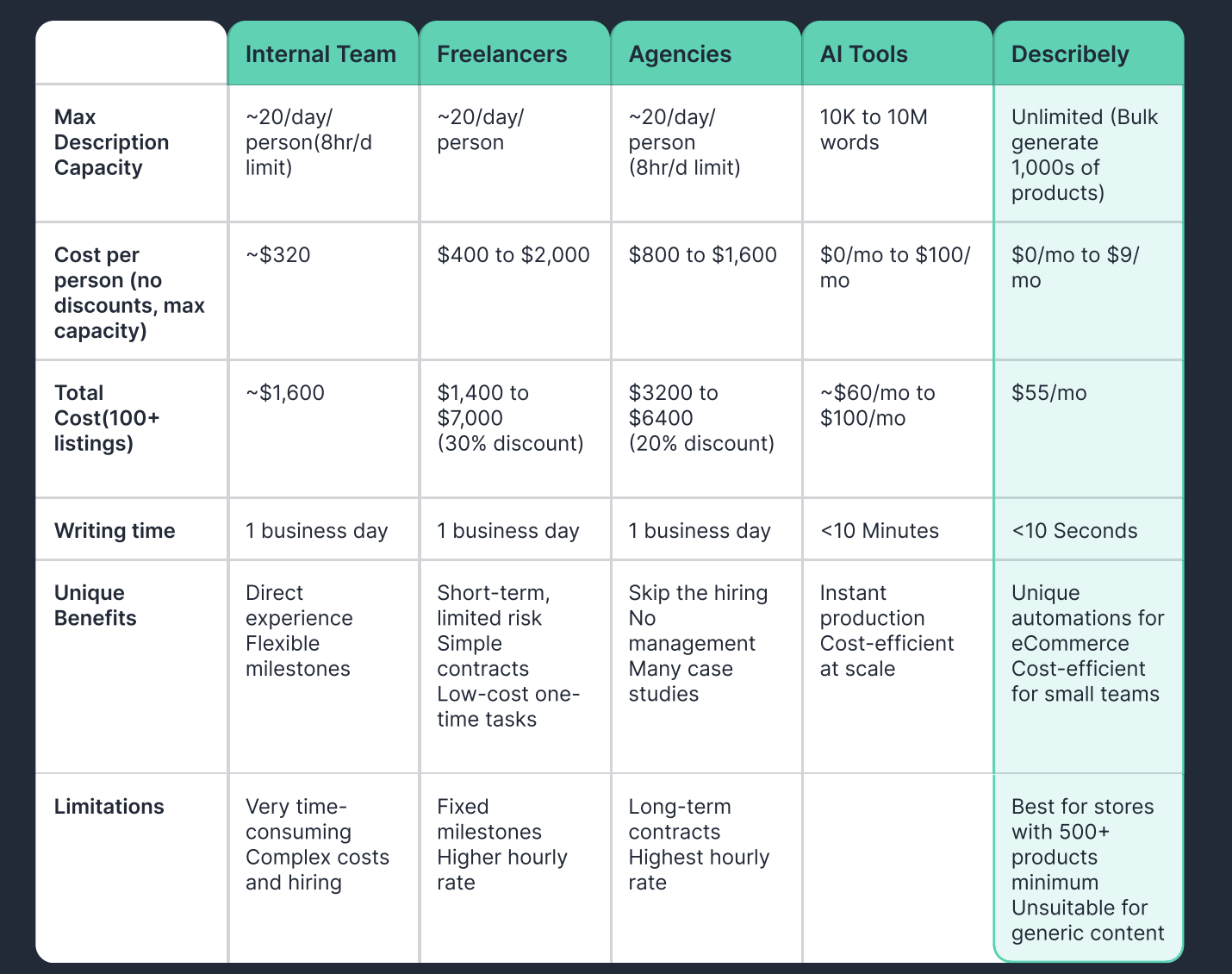
Of course, these numbers widely depend on who you hire and what AI tools you use. For the latter we’ll compare the best options at the end of this post.
As you can see from the table above, AI tools, specifically Describely, are the most cost effective option for creating content at scale. This is the primary reason why TargetAU turned to Describely for generating product descriptions, read the full case study here.
Top AI eCommerce Use Cases for Improved Team Efficiency
Looking to create effortless product content at scale? The five use cases below achieve just that: higher accuracy, fewer revisions, and fewer steps.
Note: If you want to see the exact steps to apply these use cases, download the buyer guide here.
Here’s a recap of what to look for:
Use Case 1: Product Description Copy
For the best workflow efficiency, the AI should ideally be designed for just eCommerce (or at the very least, have a product content template). Does it allow you to separately generate and optimize bullet points, descriptions, keywords, and meta descriptions?
Describely is a clear example of this use case:
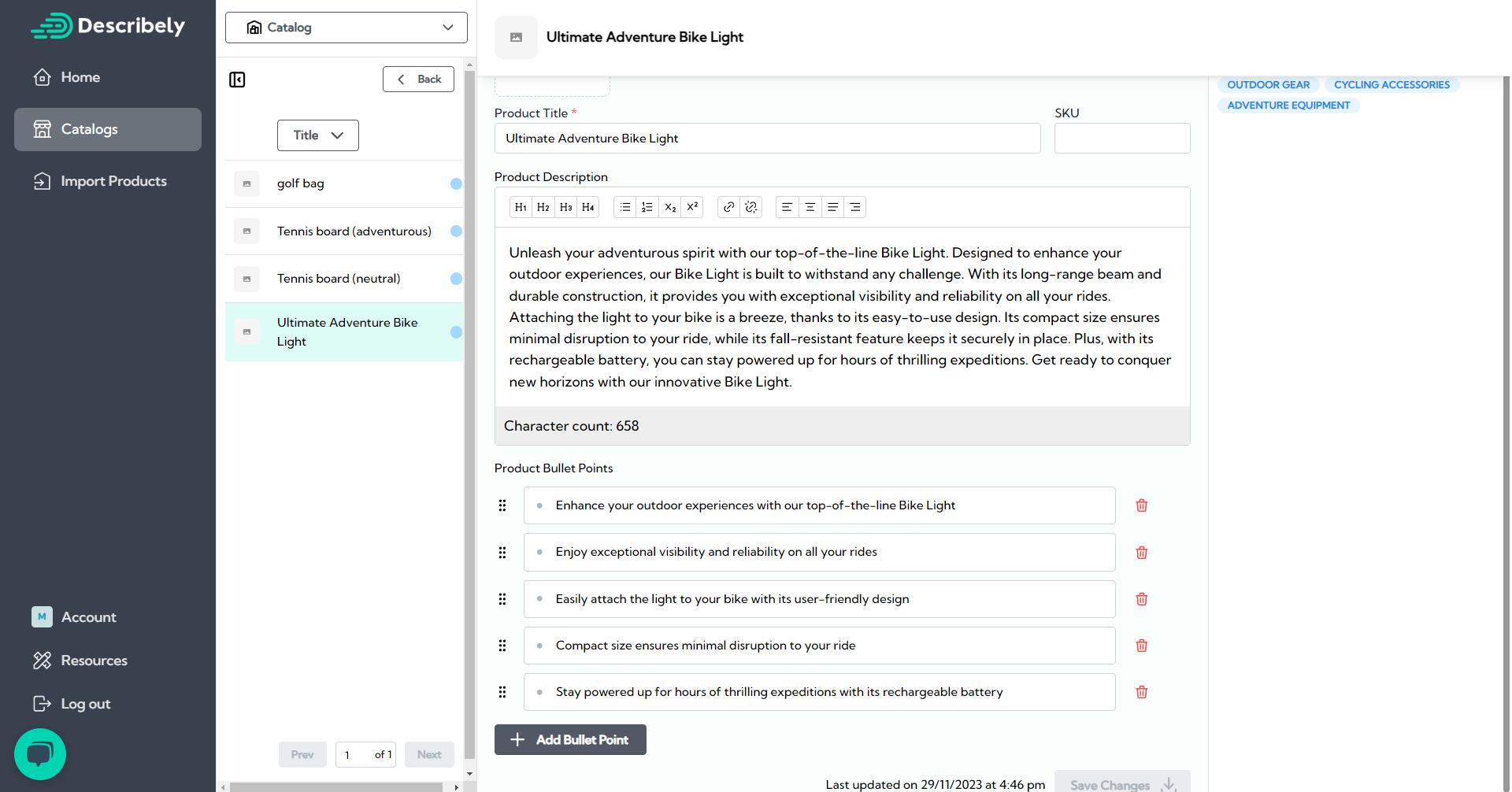
Use Case 2: Bulk Product Content Generation
Given how efficient AI is, the bottleneck is no longer the writing, but rather the content management. That’s why bulk generation is the biggest time-saver for small teams, especially when you manage thousands of listings every week.
Currently, Describely has the most customizable bulk actions:

Use Case 3: Product Data Enrichment
eCommerce product teams often run into issues of dealing with products that have sparse details, which can take longer to correct than the writing itself. The “data enrichment” allows you to automatically collect product data from supplier websites when you enter the product keyword and ID.
It was first introduced by Describely, which also supports bulk data-enrichment:

Use Case 4: Custom AI Rules
Unlike generic content, product listings follow strict guidelines to comply with marketplaces and property rights. These can quickly change and shut down thousands of listings unless you have a system to filter out conflicting data.
Ideally combined with bulk generation, AI rules should be flexible enough to include/exclude/replace keywords, as well as change the format and length of every element.
For example, here’s the Describely Default Ruleset:
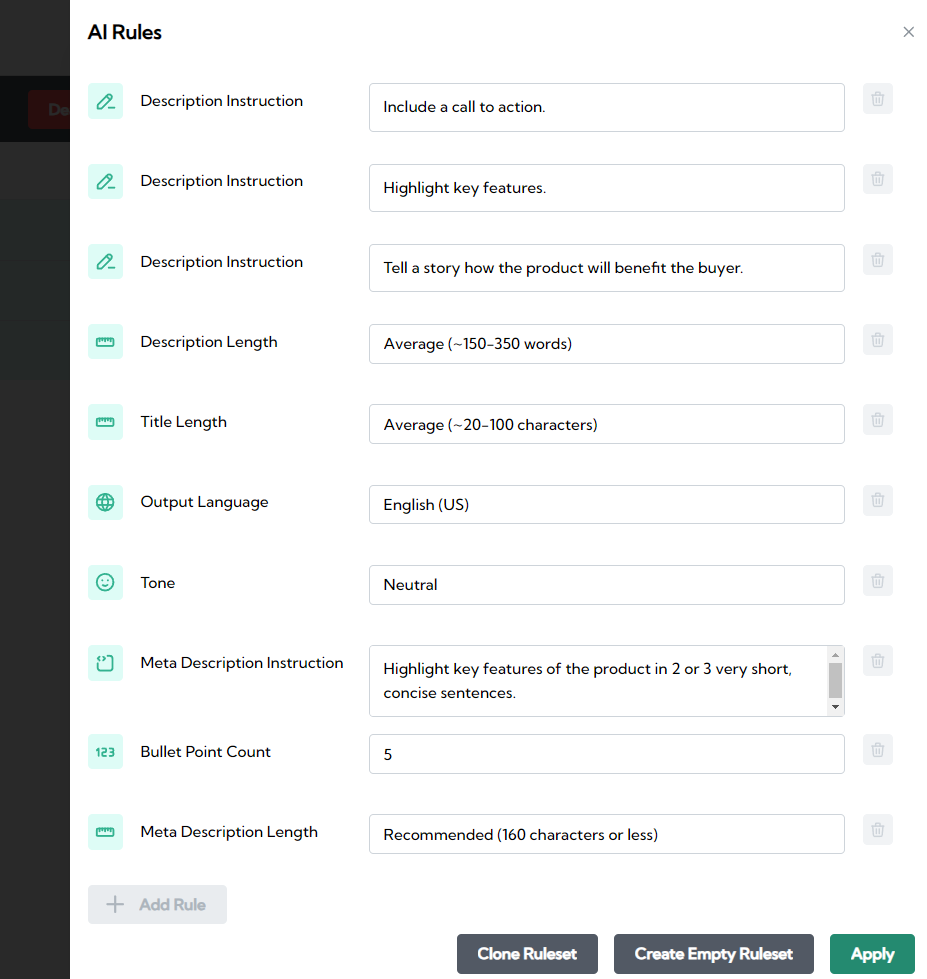
Use Case 5: SEO Keyword Data
Few AI tools use live data, leading to inaccurate keyword ideas and more revisions the greater the catalog. The ideal tool would not only gather up-to-date lists but also have the simplest implementation. For example, generate or import a keyword list and instantly regenerate the description.
As an example, the Describely SEO tools include Keyword Ideas list, Keywords Included list, and scores:
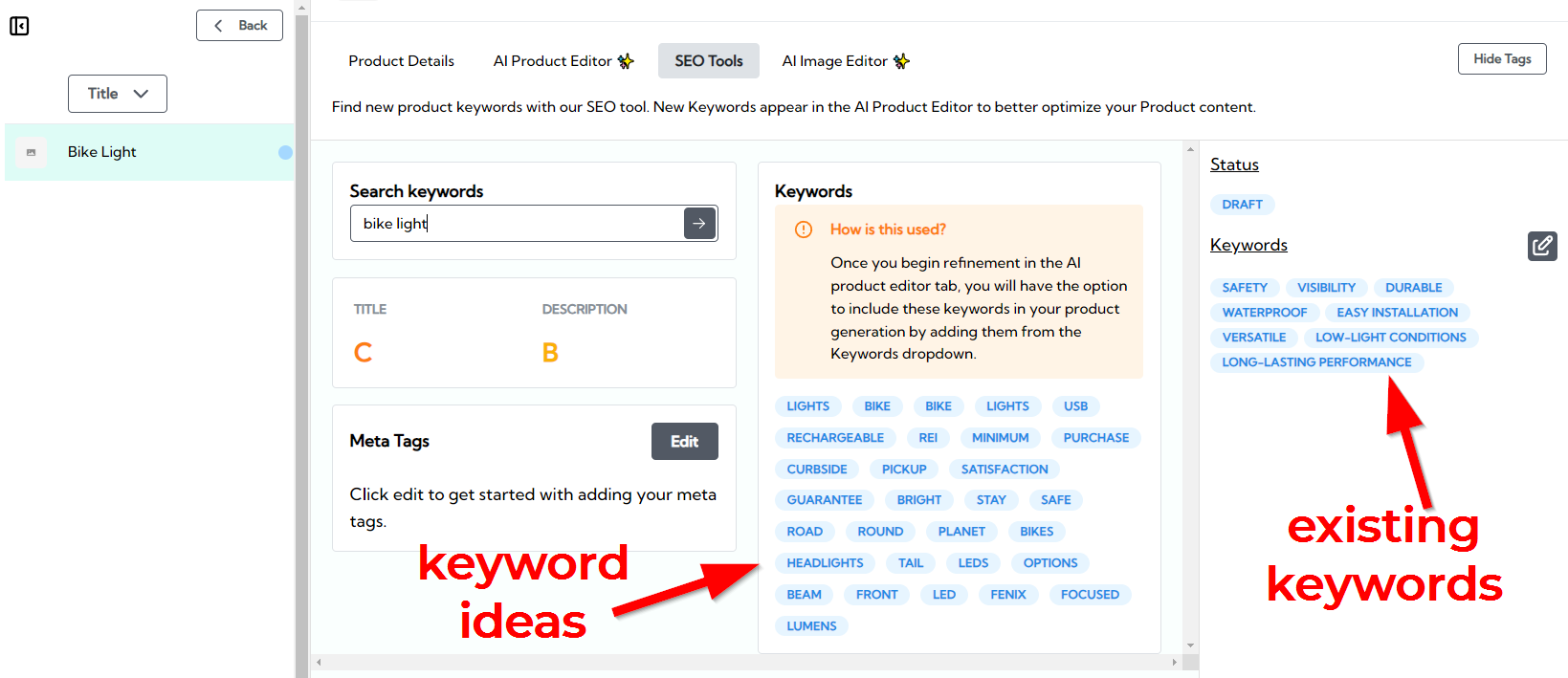
To put it all together, here’s the summary table you will get access to in the downloadable buyer guide:
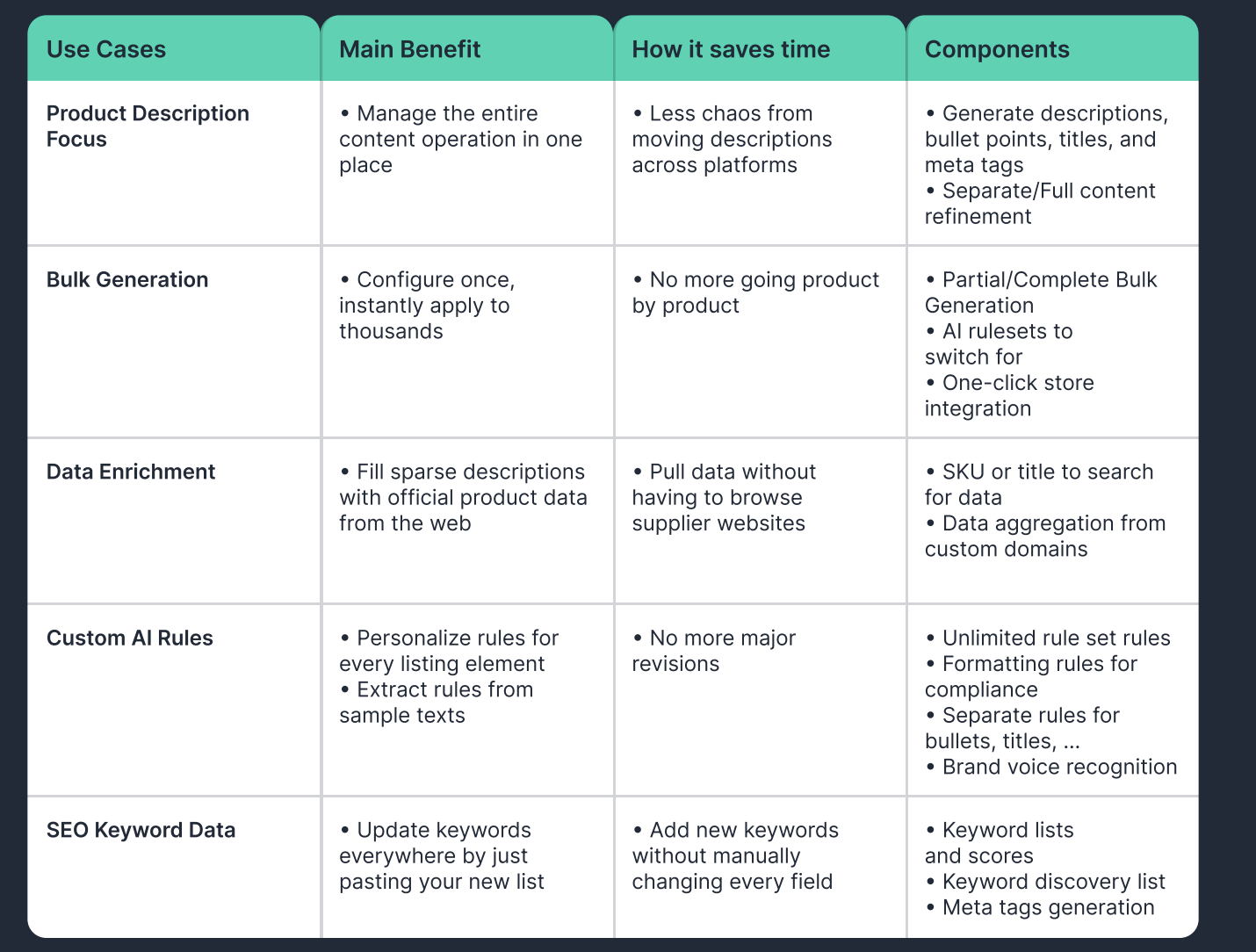
Now that you know what to look for, let’s see which AI tools have these use cases.
Existing AI Solutions For eCommerce Compared
There are potentially thousands of content generators, but how many actually save time for eCommerce teams? Here’s a quick overview of the 5 most established AI tools:
- ChatGPT Plus can be repurposed for eCommerce and excels at generating ideas and drafts, but it lacks workflow features such as integrations, bulk actions, and user seats. While not the most efficient, ChatGPT can create reliable product content if the prompts are complex enough.
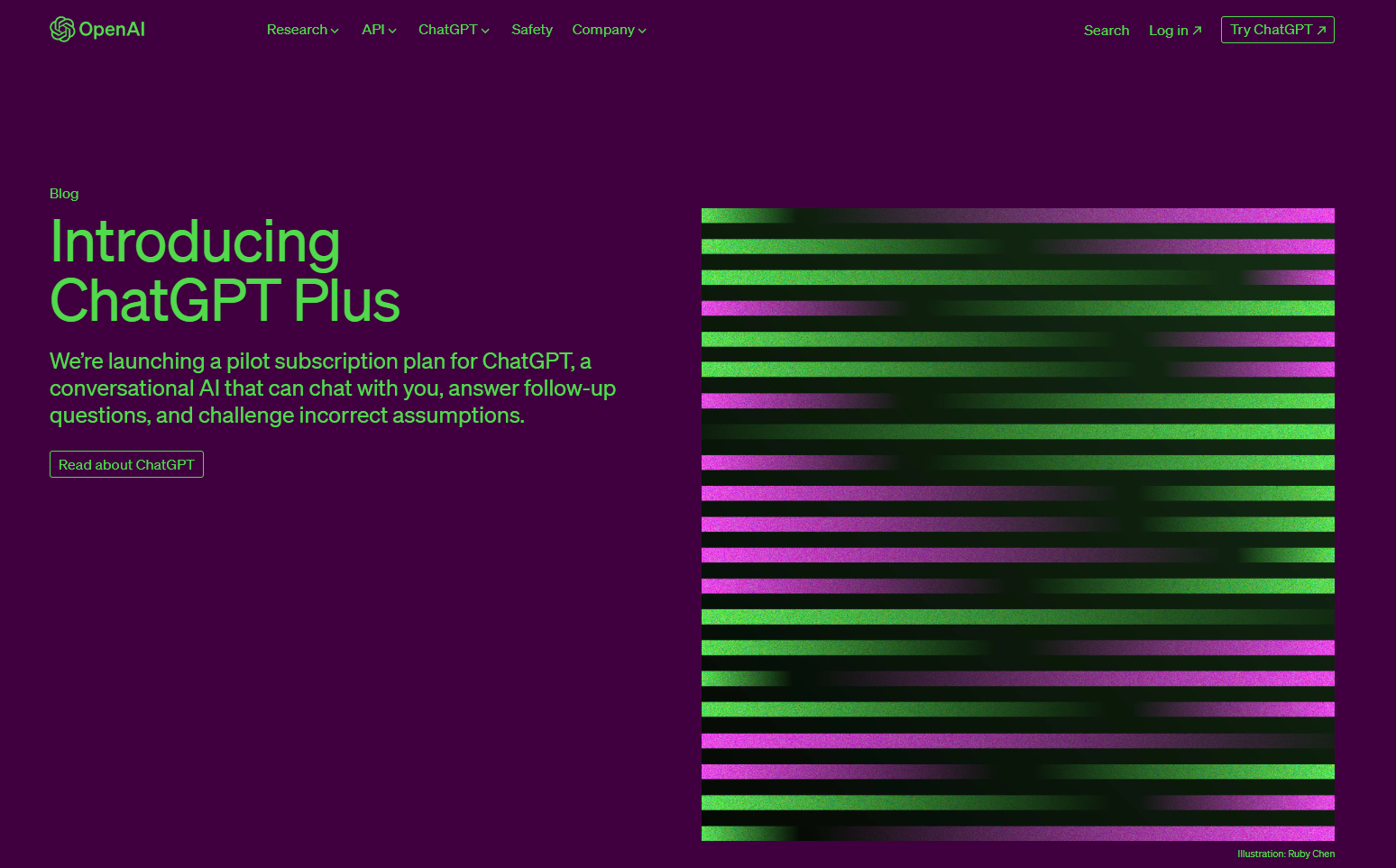
- Jasper is meant to be a hybrid tool—the writer’s “copilot.” It offers one of the most advanced AI editors and supports brand recognition but lacks workflow features. And while it’s not designed for product content at scale, it can be valuable if you want to spend extra time refining the best-selling few.

- Copy.AI—as the name suggests— aims to streamline copy generation in its broadest scope: bios, ads, tag lines, emails, outlines, acronyms, and also product descriptions. It can bulk-generate variations of the same product and recognize your brand voice from samples and links. And although it offers many templates, there’s not enough AI customization for eCommerce.
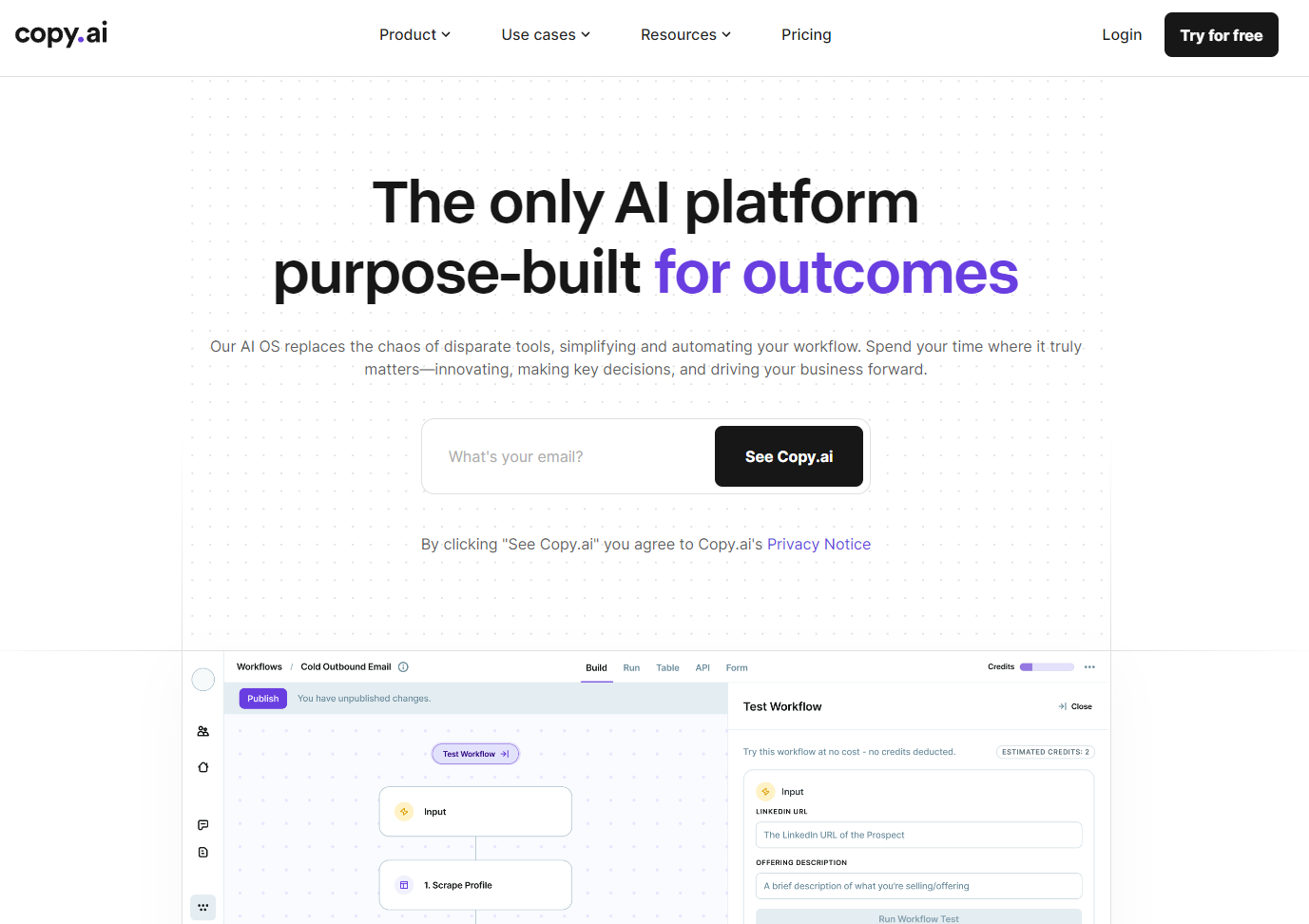
- Shopify Magic is a listing feature that generates description paragraphs from a very short prompt. It doesn’t recognize brand voice or format rules, but it’s enough to fill the page with seamlessly-worded product data.

- Writesonic is an AI tool library similar to Copy.ai but also extends to long-form content, images, and audio. These can be useful for promoting products, but the actual product description template is somewhat rigid. Still, unlike the previous four, it does have CSV bulk generation available after the free trial.

You can repurpose generic AIs for product content. However there are a lot more intricacies in eCommerce workflows besides writing, and that’s why we created Describely.
- Describely is an AI platform specialized in eCommerce content and optimized for its workflow. It offers highly customizable AI rules, modular listing generation, SEO optimization, data enrichment, and brand-aligned copy. Once generated, your team can leverage bulk generation, PIM integrations, and catalogs to publish listings in record time.
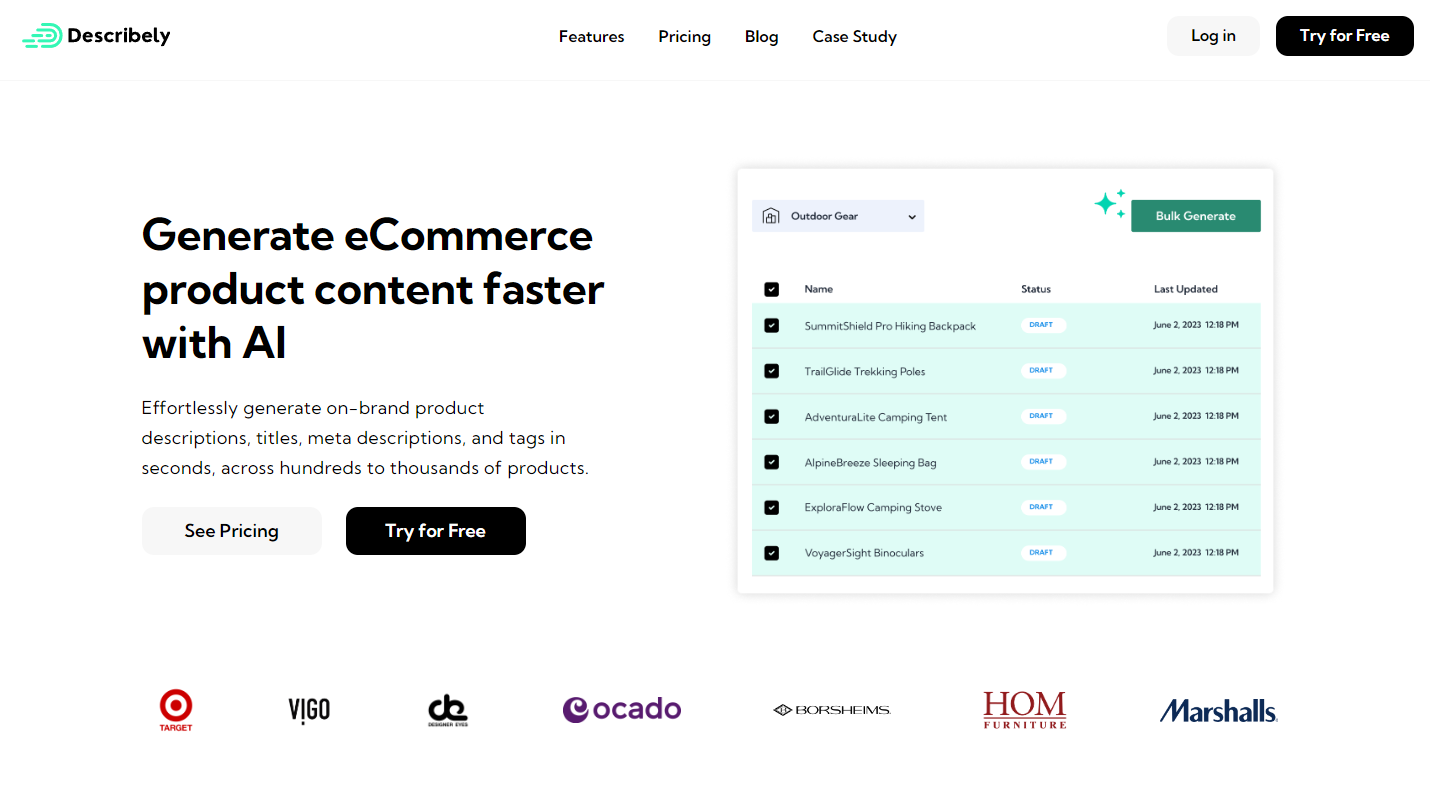
Depending on when you’re reading this, features will likely change for every platform. The difference is that when you choose a specialized AI platform like Describely, you know that every update will be directly relevant to your eCommerce team. And you can grab a free trial here.
Comparison Table: AI Tools For eCommerce
Here’s a comparison table pulled from our buyer guide highlighting the differences between eCommerce and generic AI for creating product content at scale:

If you want to dive deeper, download the buyer guide here.
Next Steps: Get Our Checklist For Buying Your Team’s eCommerce AI Tool
Putting it all together, finding the right AI tool for eCommerce comes down to four tests:
- How much AI control do you have? [Customization]
- How many steps can you remove? [Automation]
- How reliably does it work everywhere for everyone? [Versatility]
- How easy is it to get started and see results? [Entry Barrier]
In short, an AI that passes the four tests is very likely to be the best option for your team.
In our downloadable buyer guide you’ll find a 12-step checklist to help you compare these tests for any AI. We also compare the six AI tools mentioned in this article so you don’t have to. As a next step, you can download the buyer guide and checklist here.

